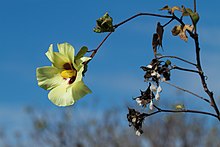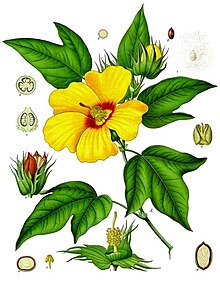
Cotton is a soft, fluffy staple fiber that grows in a boll, or protective case, around the seeds of the cotton plants of the genus Gossypium in the mallow family Malvaceae. The fiber is almost pure cellulose, and can contain minor percentages of waxes, fats, pectins, and water. Under natural conditions, the cotton bolls will increase the dispersal of the seeds.

Gossypium is a genus of flowering plants in the tribe Gossypieae of the mallow family, Malvaceae, from which cotton is harvested. It is native to tropical and subtropical regions of the Old and New Worlds. There are about 50 Gossypium species, making it the largest genus in the tribe Gossypieae, and new species continue to be discovered. The name of the genus is derived from the Arabic word goz, which refers to a soft substance.

A cotton gin—meaning "cotton engine"—is a machine that quickly and easily separates cotton fibers from their seeds, enabling much greater productivity than manual cotton separation. The fibers are then processed into various cotton goods such as calico, while any undamaged cotton is used largely for textiles like clothing. The separated seeds may be used to grow more cotton or to produce cottonseed oil.

A lima bean, also commonly known as butter bean, sieva bean, double bean or Madagascar bean, is a legume grown for its edible seeds or beans.
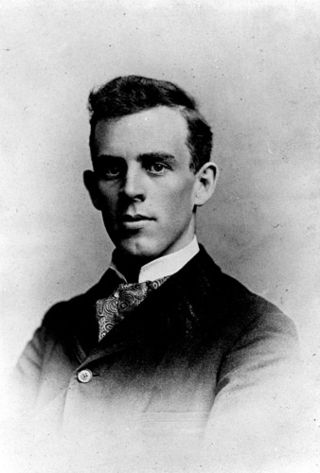
David Grandison Fairchild was an American botanist and plant explorer. Fairchild was responsible for the introduction of more than 200,000 exotic plants and varieties of established crops into the United States, including soybeans, pistachios, mangos, nectarines, dates, bamboos, and flowering cherries. Certain varieties of wheat, cotton, and rice became especially economically important.
Richard Hampton Jenrette was an American businessman who co-founded the investment bank Donaldson, Lufkin & Jenrette (DLJ).
Loutrel Winslow Briggs was an American landscape architect active in Charleston, South Carolina.

Gossypium hirsutum, also known as upland cotton or Mexican cotton, is the most widely planted species of cotton in the world. Globally, about 90% of all cotton production is of cultivars derived from this species. In the United States, the world's largest exporter of cotton, it constitutes approximately 95% of all cotton production. It is native to Mexico, the West Indies, northern South America, Central America and possibly tropical Florida.
A staple fiber is a textile fiber of discrete length. The opposite is a filament fiber, which comes in continuous lengths. Staple length is a characteristic fiber length of a sample of staple fibers. A fiber is made up of natural substances and is known for being longer than it is wide. It is an essential criterion in yarn spinning, and aids in cohesion and twisting. Compared to synthetic fibers, natural fibers tend to have different and shorter lengths. The quality of natural fibers like cotton is categorized into staple length such as short, medium, long staple, and extra-long. Gossypium barbadense, one of several cotton species, produces extra-long staple fibers. The staple fibers may be obtained from natural and synthetic sources. In the case of synthetics and blends, the filament yarns are cut to a predetermined length.
Rajagopalan Krishnamurthy is an Indian cotton researcher. He is a prolific Indian plant breeder who introduced a myriad of cotton varieties for commercial cultivation. He served in the Department of Agriculture of Tamil Nadu for one decade and almost 28 years in Indian Council of Agricultural Research (ICAR). He has released as many as 6 varieties from G. Hirsutum, two from G. Barbadense and three hybrids during his tenure in ICAR Service. All of them are prominent and accepted by the farmers as well as the textile mills at Tamil Nadu and elsewhere. He completed B. Sc.(Agri.) and M. Sc. (Agri.) in plant breeding and genetics from Tamil Nadu Agricultural University, Coimbatore. He is also the Research Director - Cotton of Rasi Seeds Pvt. Ltd.
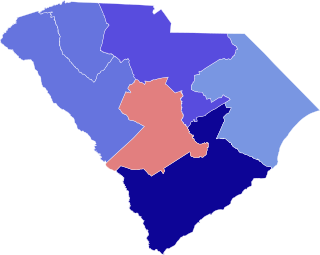
The 1968 United States House of Representatives elections in South Carolina were held on November 5, 1968, to select six Representatives for two-year terms from the state of South Carolina. The primary elections were held on June 11 and the runoff elections were held two weeks later on June 25. All five incumbents who ran were re-elected and the open seat in the 5th district was retained by the Democrats. The composition of the state delegation remained five Democrats and one Republican.

The 1971 South Carolina 1st congressional district special election was held on April 27, 1971 to select a Representative for the 1st congressional district to serve out the remainder of the term for the 92nd Congress. The special election resulted from the death of longtime Representative L. Mendel Rivers on December 28, 1970. Mendel Jackson Davis, a former aide to Rivers and his godson, won a surprising victory in the Democratic primary and went on to win the general election against Republican challenger James B. Edwards.

The Robert William Roper House is an early-nineteenth-century house of architectural importance located at 9 East Battery in Charleston, South Carolina. It was built on land purchased in May 1838 by Robert W. Roper, a state legislator from the parish of St. Paul's, and a prominent member of the South Carolina Agricultural Society, whose income derived from his position as a cotton planter and slave holder. The house is considered to be an exemplar of Greek Revival architecture, built on a monumental scale. Although there are now two houses between Roper House and White Point Garden to the south, for a decade after its construction nothing stood between the house and the harbor beyond, making it the first and most prominent house to be seen by visitors approaching Charleston by sea.

The U.S. Post Office and Courthouse is a historic post office and courthouse located at Charleston in Charleston County, South Carolina. The building and its annexes serve the federal court for the Charleston Division of the United States District Court for the District of South Carolina. The building was listed on the National Register of Historic Places in 1974.

Edward Culliatt Jones was an American architect from Charleston, South Carolina. A number of his works are listed on the U.S. National Register of Historic Places, and two are further designated as U.S. National Historic Landmarks. His works include the following :

Crawford's Plantation House is a plantation house on Edisto Island, South Carolina of architectural significance. The building reflects an antebellum Greek Revival Sea Island cotton plantation. Between 1889 and 1899, one-story polygonal projections at the front were added. An earlier porch was replaced in the twentieth century, and the back porch has been enclosed. The plantation was listed in the National Register on June 8, 1993.
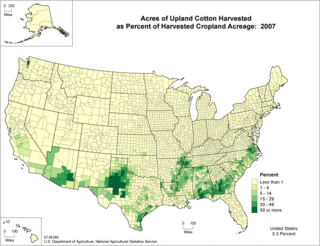
The United States exports more cotton than any other country, though it ranks third in total production, behind China and India. Almost all of the cotton fiber growth and production occurs in the Southern United States and the Western United States, dominated by Texas, California, Arizona, Mississippi, Arkansas, and Louisiana. More than 99 percent of the cotton grown in the US is of the Upland variety, with the rest being American Pima. Cotton production is a $21 billion-per-year industry in the United States, employing over 125,000 people in total, as against growth of forty billion pounds a year from 77 million acres of land covering more than eighty countries. The final estimate of U.S. cotton production in 2012 was 17.31 million bales, with the corresponding figures for China and India being 35 million and 26.5 million bales, respectively. Cotton supports the global textile mills market and the global apparel manufacturing market that produces garments for wide use, which were valued at USD 748 billion and 786 billion, respectively, in 2016. Furthermore, cotton supports a USD 3 trillion global fashion industry, which includes clothes with unique designs from reputed brands, with global clothing exports valued at USD 1.3 trillion in 2016.
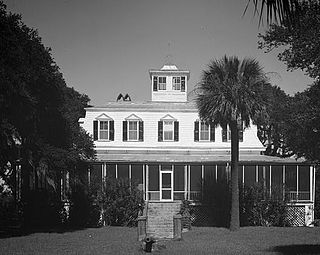
Sunnyside, also known as the Townsend Mikell House, is a historic plantation house located at Edisto Island, Charleston County, South Carolina. The main house was built about 1875, and is a 1+1⁄2-story, rectangular, frame, weatherboard-clad residence. It features a mansard roof topped by a cupola and one-story, hipped roof wraparound porch. Also on the property are the tabby foundation of a cotton gin; two small, rectangular, one-story, gable roof, weatherboard-clad outbuildings; a 1+1⁄2-story barn; and the Sunnyside Plantation Foreman's House. The Foreman's House is a two-story, weatherboard-clad, frame residence built about 1867.

Tower Mill is a cotton mill in Dukinfield, Greater Manchester, England. It is a grade II listed building. It was designed by Potts, Pickup & Dixon in 1885 and spun cotton, using mules and spinning frames until 1955 when it was no longer used as a cotton mill and was subsequently used by various industries and divided into small units, at one point plans were even passed for the mill to be converted into luxury apartments but with the recession in 2007/8 this plan was abandoned. After several years of lying empty it was eventually bought in 2013, restored and re-equipped to ring spin superfine cotton yarns in 2016 and is now after the absence for many years the only cotton mill in production in the United Kingdom.

Cotton maturity is a physical testing parameter of cotton fiber properties testing. It is quantified by the degree of cell wall thickening relative to its perimeter. The maturity of individual cotton fiber is an essential aspect of the cotton classing regarding the aesthetics such as appearance, dye-uptake, etc. High volume instrument (HVI) can test cotton maturity like many other fiber properties, including length, uniformity, micronaire/fineness, strength, color, etc.
